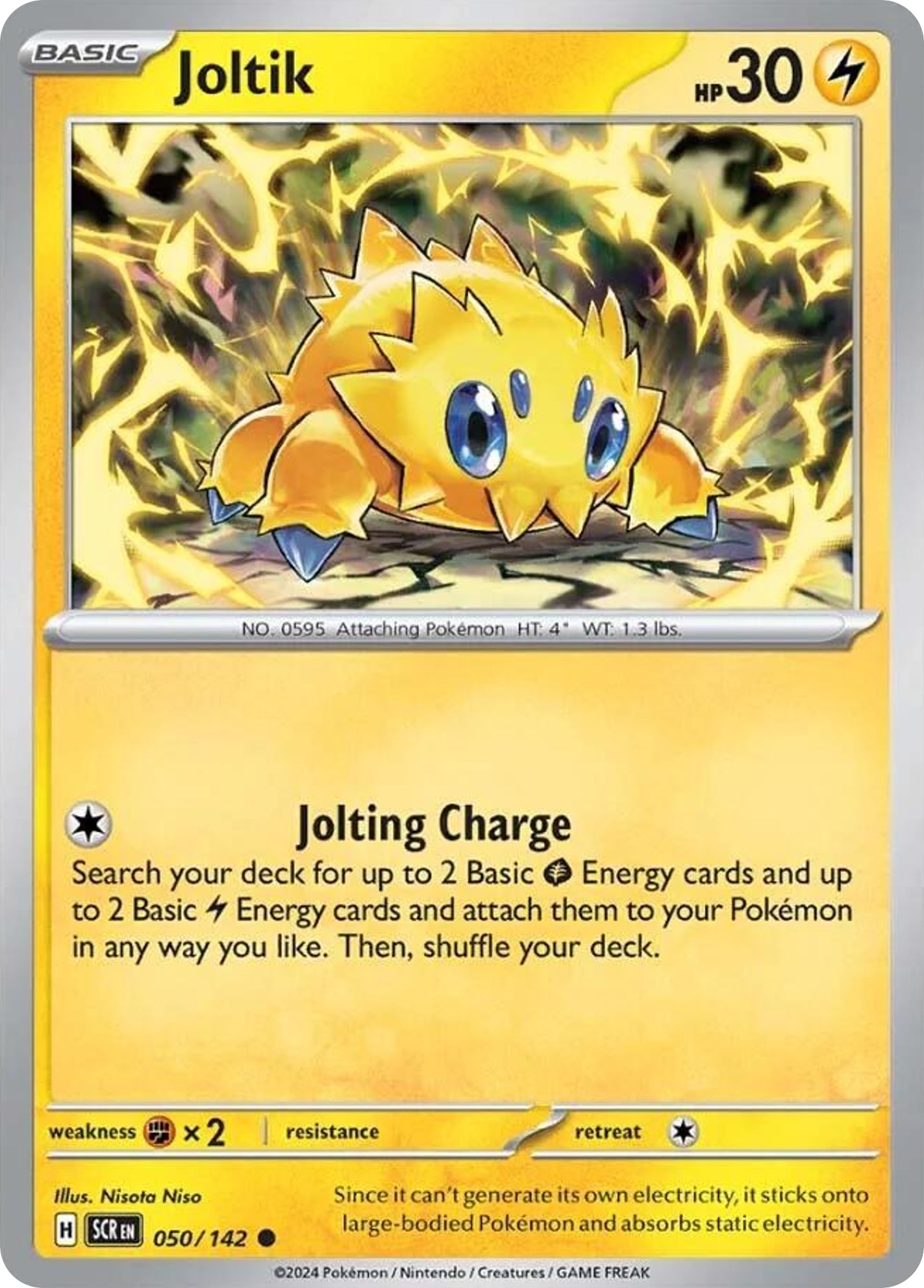Angelite — Recapping the Sylveon ex Deck I Played in Milwaukee
Hello PokeBeach readers! Isaiah here, and I am happy to be writing another article for you all! Last time, I discussed the lack of Tera Box in the format, and how I felt that Yerco Valencia's deck list from the Monterrey Regional Championships would likely lead to players re-examining the deck for future events, including the Seville Special Event and Milwaukee Regional Championships. As expected, Tera Box put up much better results at these two events than it did at the Atlanta Regional Championships.
While Yerco's finish in Monterrey was certainly impactful on the overall metagame at Seville and Milwaukee, however, he was far less impactful than Tyler Matthews' finish with Joltik, which has taken the deck from relative obscurity to its current status as a massive meta threat, largely because the deck is so simple. In general, simple decks will always be extremely popular, such as Raging Bolt ex in previous formats, and Joltik is just the next in line for that. It's simple and also has a great matchup spread, being favored against Dragapult ex and Gholdengo ex and having a decent matchup against Gardevoir ex and Raging Bolt ex. Despite the expectation that a lot of players would pick up Joltik, I don't think I could have ever predicted just how many did. At the Atlanta Regional Championships, Joltik was only played by eight players: 0.30% of the metagame. Not long after that, 2014 VG World Champion Se Jun Park posted a deck list that got a lot of people's attention, and by Monterrey, it was up to a 1.37% play rate, which was much higher but still not super significant. Seville was the first event where people really started to take the deck seriously: it now made up 4.66% of Day 1 and had a really strong conversion rate into Day 2 (8.82%). Following this explosive finish, people started to expect that Joltik would have a strong showing in Milwaukee. However, it surpassed all expectations: Joltik was an unbelievable 11.75% of Day 1 (194 players), and also had a 23.71% conversion rate, which was the highest of any deck in the event played by more than 50 players. Joltik was played by 16.37% of Day 2, which is the highest play rate if you separate Dragapult ex by the Dusknoir and non-Dusknoir versions.
Joltik's meteoric rise in this format has been remarkable to see, as stuff like this is extremely rare. However, the deck is bit underwhelming overall, at least in my opinion. While it is a newsworthy topic, Joltik is not the focus of this article. Instead, I want to focus on a different deck that has recently risen to prominence: Flareon ex / Sylveon ex / Noctowl. Following a deep run at the Atlanta Regional Championships, this deck caught some attention, but never really rose to prominence in the same way as Joltik. There were several groups of pretty good players that brought the deck to the Milwaukee Regional Championships, with a total of 13 in Day 2, but no group was as successful as mine, which was able to go 5 for 5 on Day 2 finishes, with Ian Robb in Top 8. Our group put a ton of work into the list, and I am really happy with how it turned out. I'll start off by talking about the process that went into deciding on the deck and beyond.
What Caused Us to Play Sylveon ex?
While testing for the Atlanta Regional Championships, Ian and I actually did briefly consider Sylveon ex as a deck, but we just could not get the deck to function the way we wanted it to, so we ended up scrapping it. We more or less went our separate ways in testing after that point, and ultimately we ended up playing Dragapult ex and Poison Archaludon ex, respectively, and both had pretty reasonable finishes. Throughout the weekend, though, Ian and I both had the Sylveon ex deck that we kept seeing in the hands of other competitors in the back of our minds. I did not play against any of them myself, but I saw many of them playing games, including multiple times against Ian when we sat by each other. Something we both agreed on was that they usually probably should have been beating him, but would consistently get a little unlucky, often with draws.
Regardless, we were both impressed by the deck by the end of the weekend, and we were interested in exploring it further. At first, we tried the deck lists that had done well in Atlanta, but we were unimpressed. While they were mostly really good, it just felt like there was something missing, and certain inclusions, such as Unfair Stamp, felt particularly unimpressive. We started working on a variety of ideas to try and iron out some of the flaws we found, such as the Noctowl engine sometimes feeling insufficient, but a lot of these ideas ended up being pretty bad. Ultimately, a more traditional approach to the deck was what we would settle on, and from that point, we just had to determine what of the deck was actually good and what matchups we wanted to commit to with our last few deck spaces.
Taking a step back, a big guiding point for us was matchups. Sylveon is sort of an anti-meta deck, so having a good matchup spread is obviously one of its core strengths. We identified that many top players had been playing Gholdengo ex both with and without Dragapult ex, so being able to beat that deck reliably seemed like a core aspect of wanting to win the tournament. Fortunately, Flareon ex allows our deck to absolutely shred Gholdengo ex decks, opening up an simple and extremely efficient Briar game plan where you take your Prize cards in a 1-2-3 pattern if you are taking the first Knock Out, or 2-2-2 if they are taking the first Knock Out. With a near auto-win against a deck that was expected to be popular among the best players in the room, we were already feeling pretty good about the deck, but obviously we were not going to hit 15 rounds of Gholdengo. Dragapult ex, naturally, was the other big concern, as it is (or perhaps was) the most popular deck in the format, so we had to expect to hit several in a run to the top.
As you may expect, this deck also does very well into Dragapult ex decks. With Lillie's Clefairy ex to take one-hit Knock Outs, you have the option to be super aggressive, or, as some may forget, you can also play super slow with Sylveon ex's Angelite. Following the Atlanta Regional Championship, we expected most players to copy either Andrew Hedrick's Dusknoir build or Tanner Hurley's non-Dusknoir build of Dragapult ex, and because of that we were able to identify a critical weakness: neither of these deck lists plays a way to attach extra Energy in a turn. This means that, if all goes according to plan, you can very realistically keep them from using Phantom Dive for the entire game if you just keep their Energy off the board with Angelite and Boss's Orders the whole time. In theory, and more or less in practice as well, this matchup is surprisingly difficult to lose despite the recorded win rate into the matchup barely being 50%.Gardevoir, of course, was also a big focus, but we ultimately did not have a great answer for the deck other than just hoping they draw bad or play poorly. If they are drawing well and play well, it should be borderline impossible to win the matchup. In reality, the opponent will generally draw poorly enough that you can try to sneak into a game with Angelite, especially if they aren't so good a player.
Aside from these big three decks, we also had some concerns about some of the other more popular decks, with the big two that we wanted to prepare for being Joltik and Raging Bolt. Joltik is a pretty good matchup, in my opinion, as it is pretty unrealistic for the opponent to be able to dodge you taking a 1-2-3 Prize map with Briar, and even if they keep a small Bench, there is probably a way into the game with Crown Opal on Terapagos ex. Similarly, Raging Bolt is also a 1-2-3 matchup that can be won with Crown Opal, but unlike Joltik, it is also pretty realistic to beat Raging Bolt by going 2-2-2 if they ever bench a Teal Mask Ogerpon ex.
With so many good matchups, it should be pretty easy to see why we thought this deck was good enough to play, so we got to work refining our deck list and we ultimately landed on the following 60, which was played by Ian Robb (Top 8), Michael Bio (Top 64), myself (Top 64), Aaron Friedman (Top 256), and Justin Stites (Top 256). While we did not walk away with a win, I would say we were extremely successful with the list, and I honestly do not think that I would change a card going forward.
This concludes the public portion of this article.
If you'd like to continue reading, consider purchasing a PokeBeach premium membership! If you're not completely satisfied with your membership, you can request a full refund within 30 days.
Each week we post high-quality content from some of the game's top players. Our article program isn't a corporate operation, advertising front, or for-profit business. We set our prices so that we can pay the game's top players to write the best content for our subscribers. Each article topic is carefully selected, goes through multiple drafts, and is touched up by our editors. We take great pride in our program!


